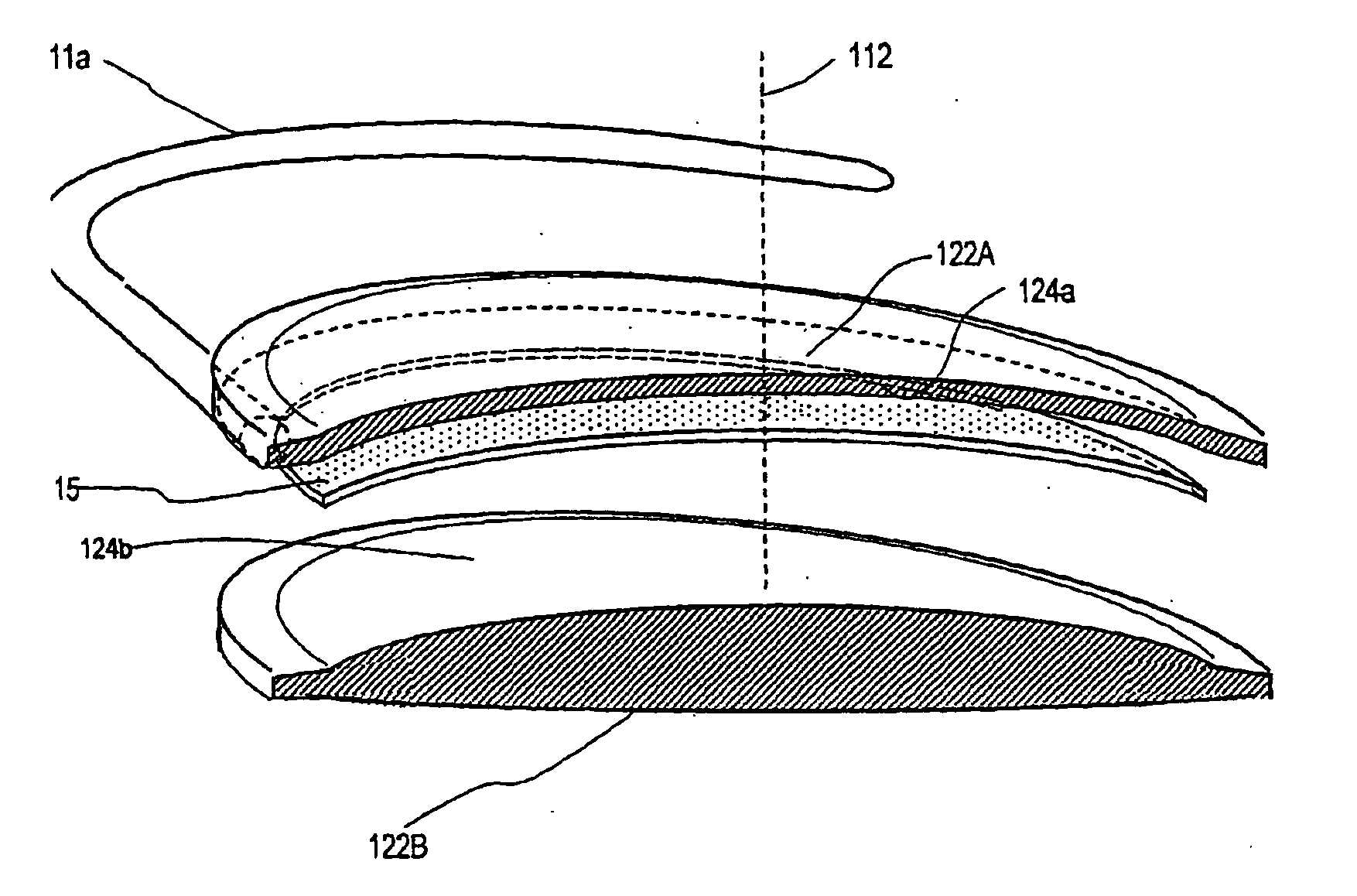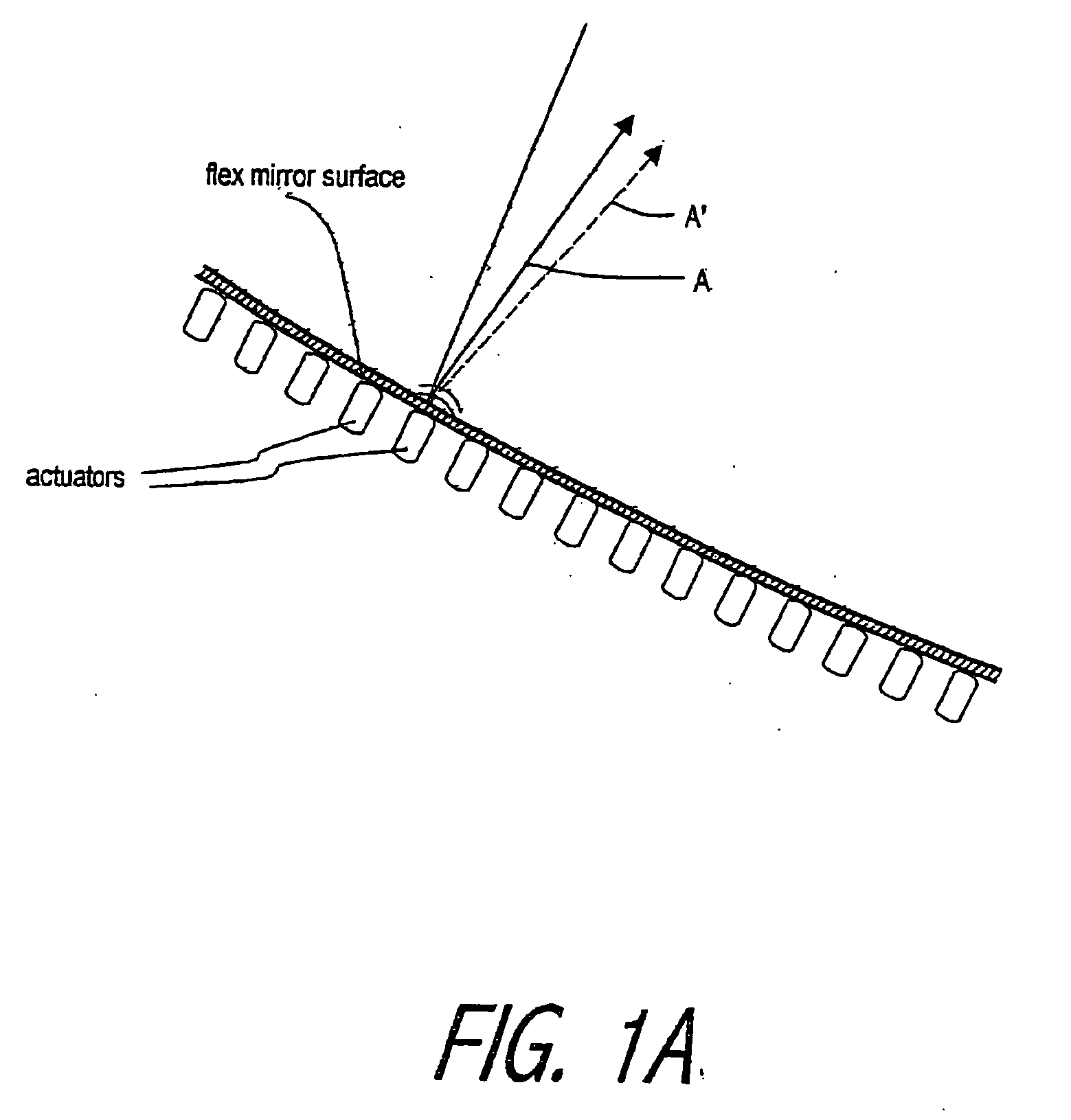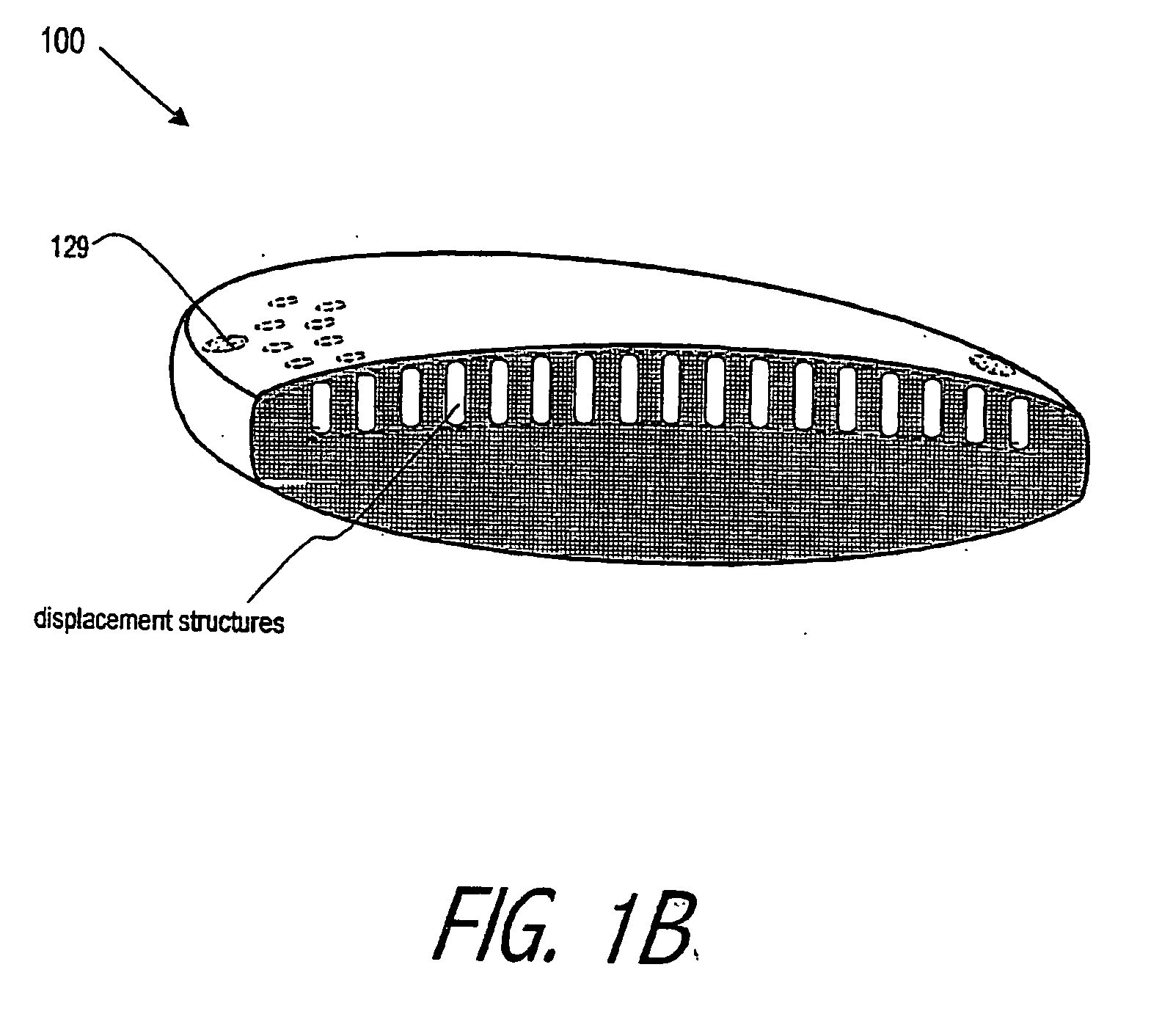Adaptive optic lens system and method of use
a technology of optic lens and adaptive lens, applied in the field of ophthalmic lenses, can solve the problems of intractable problems in calculating the proper power, the margin of error of refractive error in biometric systems, etc., and achieve the effect of reducing aberrations
- Summary
- Abstract
- Description
- Claims
- Application Information
AI Technical Summary
Problems solved by technology
Method used
Image
Examples
embodiment 190
[0050] Referring to FIG. 9, another IOL embodiment 190 is illustrated in exploded view wherein light energy again is applied only in the non-optic portion 111 instead of the optic portion 110. The embodiment of FIG. 9 comprises simplified adaptive optic that is designed only for spherical corrections and not high order aberration correction. The exemplary IOL of FIG. 9 has an annular SMP member 195 that can be moved from a temporary shape or porosity to a memory shape or porosity to achieve large diopter changes. The central portion or interior phase 196 of the lens can carry a fluid media 140 in an open chamber as described above, for example a silicone of a selected viscosity that may be gel-like. As in previous embodiments, the lens has non-permeable first and second surface layers 124a and 124b that envelope the interior phase 196. As can be seen in FIG. 9, it can be understood that light energy can be scanned and applied to the annular SMP member 195 to move it toward its memor...
embodiment 200
[0052] 2. Type “B” soft adaptive optic system. In another adaptive lens embodiment 200 depicted in FIG. 12, the lens again has an optic portion 210 and a non-optic portion 211. The lens has an interior form or phase 215 as depicted in FIGS. 6A-6C that is enveloped by anterior body portion or surface layer 224a and posterior body portion 224b. In this embodiment, the displacement structures 220 (collectively) operate as described previously to deform an anterior surface layer 224a. This embodiment differs in that shape memory polymers are in the same role to alter the volume of the fluid 225 in the displacement structures 220. In the exemplary embodiment of FIG. 12, the lens carries sacrificial elements 250a-250n in channels 222 (collectively) that individually communicate with space in each individual displacement structures 220a-220n.
[0053] In use, the lens is selected for a patient to have a positive power that exceeds the power indicated by biometry. When the lens 200 is implant...
PUM
 Login to View More
Login to View More Abstract
Description
Claims
Application Information
 Login to View More
Login to View More - R&D
- Intellectual Property
- Life Sciences
- Materials
- Tech Scout
- Unparalleled Data Quality
- Higher Quality Content
- 60% Fewer Hallucinations
Browse by: Latest US Patents, China's latest patents, Technical Efficacy Thesaurus, Application Domain, Technology Topic, Popular Technical Reports.
© 2025 PatSnap. All rights reserved.Legal|Privacy policy|Modern Slavery Act Transparency Statement|Sitemap|About US| Contact US: help@patsnap.com



